————————————————————–
Thanks again for reading my posts.
It’s hard to believe that there’s only one month left in the year. Besides, it’s totally cold these days.
Since summer, I was interested in a certain rider house at Hibara-ko Lake in Fukushima pref., so I’ve decided to go there for “Momiji-Gari”(autumn leaves viewing) this year. However, while I was dilly-dallying, Bandaisan toll tourist roads already closed for winter.
It seems that winter is coming without having time to enjoy the fall leaves.(^^;)
Yes, the ski season is finally here for those who love it. Are there many people who can’t wait for the opening and check the snowfall information every day?
Well, I’m already an old man and haven’t been to the snow mountains for a while.
But when I was young, especially during my student days with enough time, I used to go skiing for over 20 days every year.
And… the nostalgic “Pia Ski Map” that I favoritely used at that time… came out of the closet.(^^)
So, this is just a self-satisfying post to reminisce before throwing it away. It’s like a joke article, but it might be enjoyable for those old men and women who know that time. (^^;)
There you go.
- Found a “Pia Map” from several decades ago.
- Listed my favorite nostalgic ski resorts.
- Places I want to visit again!! Top 10 favorite ski resorts
- No. 10 Naeba Ski Resort (Niigata Prefecture)
- No. 9 Kagura-Mitsumata-Tashiro Ski Area (Niigata Prefecture)
- No. 8 White World OZE-IWAKURA (Gunma Prefecture)
- No. 7 Hakuba-Happo-One (Nagano Prefecture)
- No. 6 Zao Onsen Mountain & Snow Resort (Yamagata Prefecture)
- No. 5 Nozawa Onsen Ski Resort (Nagano Prefecture)
- No. 4 NISEKO UNITED (Hokkai-do Prefecture)
- No. 3 Prince Snow Resort Furano (Hokkai-do Prefecture)
- No. 2 SHIGA KOGEN (Nagano Prefecture)
- No. 1 APPI KOGEN (Iwate Prefecture)
- Introducing impressive ski resorts outside of the ranking by area.
- Finally, here’s the map
- In the end…
Found a “Pia Map” from several decades ago.
I’m in the process of cleaning out my closet and getting rid of documents, books, etc. (For more information, please refer to below(↓), and I found this in a cardboard box of old books.
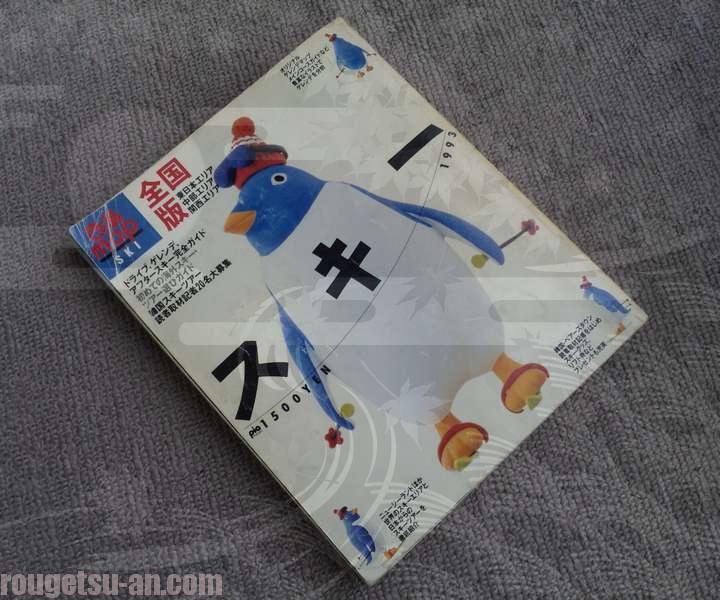
It’s a nostalgic ”Pia Map”, a special feature book on the theme of ski resorts.
When I was young, still in the 20th century, there was a ski boom in Japan. On Friday nights, It was quite a sight to see young people carrying ski boards on their shoulders and dragging caster bags would gather at the bus stops in front of Shinjuku Nishiguchi or Jingu-Kaiga-kan.
Skiing is an expensive sport, and the slopes were extremely crowded at that time, with lift lines comparable to those at Disneyland. However, for students, March is like a Sunday every day after annual final exams are over, and on weekdays when ski resorts and roads are relatively empty, they can go easily wherever they want. Once I get a job as a new graduate, I couldn’t ski anymore, so I went out every week saying, “I can only do it now”
…The boom disappeared in just a few years, and even on weekends, it seems to be deserted now. Well, that’s probably the original normal state. I didn’t have to rush. (^^;)
Anyway…, it’s clean for a book that’s over twenty years old.
The content doesn’t seem to have deteriorated much, even though the cover is another story. I wonder if they used good quality paper during the bubble economic period.

However, if you look closely, there are small details that make you feel the era.
This is the advertisement on the back cover. It’s for the now-defunct Nissan Terrano. Well, it wasn’t selling that well at the time, so I didn’t see it around much. I wonder if it was only Mitsubishi Pajero and RVR running around loaded with ski boards.
Anyway, before throwing it away, I flipped through it and…
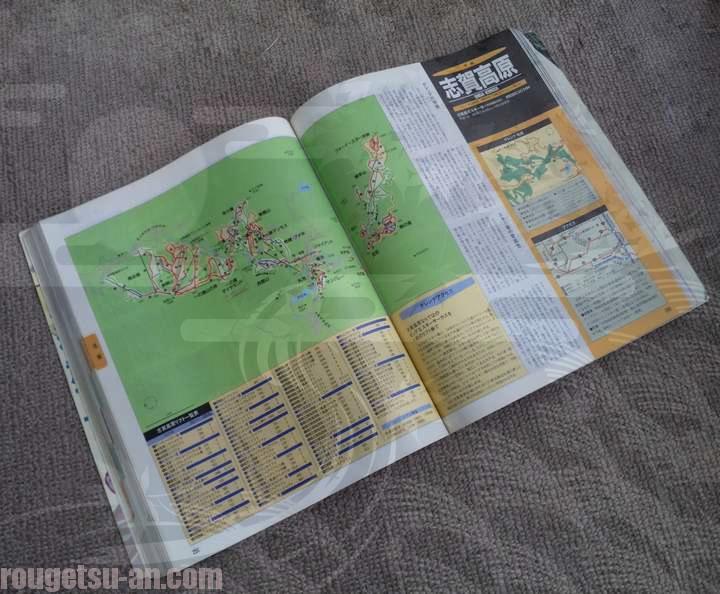
When I opened it, you see… It’s not damaged at all.
There’s no fading, it’s exactly the same as it was back then.
It looks like a regular ski guide that you can still buy today. The only difference is that there are no URLs or mobile phone numbers, and the highways have changed quite a bit.
With this in hand, I loaded my ski boards onto the roof carrier that my uncle gave me and went to various ski resorts here and there. It’s nostalgic… I think I’ve been to more than 50 ski resorts, including small ones that are not listed in this book. Thinking about it again, I had a lot of free time back then lol.
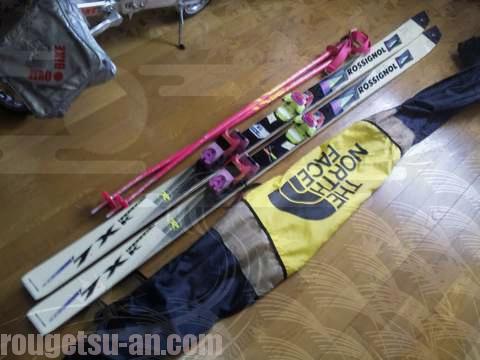
Listed my favorite nostalgic ski resorts.
So, here is my personal ranking.
First of all, I would like to clarify that this is not a generally recommended ski resort ranking. This is my personal favorite ski resort ranking. It’s just a nostalgic hobby article lol.
Although it takes the form of a ski resort ranking, it’s not a ski resort guide. The purpose is for old people to reminisce about their youth and memories.
However, even if the facilities, access roads, etc. have been renewed, the shape of the mountain and weather conditions will not change significantly. Ski resorts that were popular in the past should still be good places to visit. If you are considering where to go this year, I hope you can use this as a reference to some extent.
Not only for ski resorts but also for gourmet and travel rankings, there are surprisingly many things that seem to be written by people who have never been there. However, everything below is based on my actual experience!! The information is quite old though…. (^^;)w
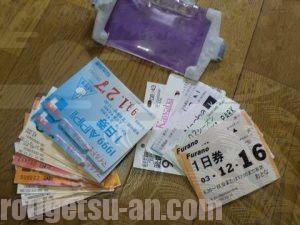
If you are using this to search for ski resorts, please keep in mind that this is just a personal ranking. I wouldn’t say that this is “not” useful for those who is going tomorrow, but please be sure to check the latest information yourself. I have also included links to each ski resort’s homepage.
Also, since it’s impossible to list all of them (36), I’ve limited the ranking format to my top 10 favorite ski resorts. For other ski resorts, I’ve summarized the details at the end. Please refer to that as well.
Finally, I’ve included a map at the bottom. I’ve plotted all the ski resorts introduced here, so please feel free to use it if you need it.
Let’s go!”
Places I want to visit again!! Top 10 favorite ski resorts
Let’s get started. I’m sure there are some omissions and errors, but I checked it and found out that I’ve been to over 40 ski resorts listed in this book (“pia map”) lol.
Anyway, I arbitrarily ranked them up to 10th place based on my biased opinion, so I’ll introduce them individually. Other ski resorts (26) are summarized by area at the end. Please refer to that as well.
So, let’s start with 10th place.
First of all, there are several ski resorts in the day-trip area from the Tokyo metropolitan area.
No. 10 Naeba Ski Resort (Niigata Prefecture)
⇒Naeba Ski Resort Official Website
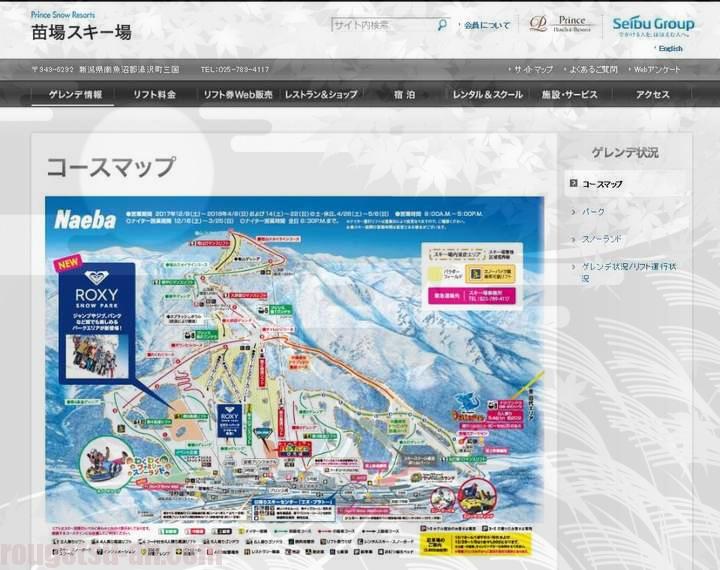
| ↓DATA from original “Pia Ski Map” at the time(1990) | |
| Number of lifts(incl. gondola) |
38 lifts(incl. 1 gondola) |
| height difference | 889m |
| Maximum distance | 4000m |
| Number of courses | 14 courses |
| Lift ticket fee | \4500(One-day pass) |
| Access | 31km from Tsukiyono IC of Kan-etsu Expressway |
It’s Naeba, a well-known ski resort.
For the generation who experienced the ski boom during the bubble economy period, it’s a resort that everyone knows, even those who don’t ski. Yuming (Yumi Matsutoya) has held her famous concert “SURF & SNOW in Naeba” at Naeba Prince Hotel, and this year marks the 38th time. It’s already a part of history, isn’t it?
I don’t know much about the current situation, but back then, it was extremely crowded with “Onobori-san” (bumpkin?). The congestion of the slopes and the long wait for the lifts were already frustrating, but the heavy traffic on the way to the site was also terrible.
So I avoided on my student days when I was most into skiing. I’ve never been there.
Later, after becoming a working adult, I went there casually with a feeling of returning to my forgotten youth, thinking, “Come to think of it, I haven’t been there.” And then…
Wow, it’s pretty good!! I revised my opinion a little.
- The moderate size is not as large as major ski resorts like Shiga and Appi, but it’s not so narrow that you get bored easily.
- The snow quality was better than expected. I had imagined the heavy snow popular in Echigo-Yuzawa area, so the unexpected powder snow was a pleasant surprise.
- After all, ski resorts in the Kan-Etsu area are still close. It’s great that you can get there (to the other side of the Kan-Etsu Tunnel) in just two hours on the highway from Nerima IC.
…there are various points, but the important ones are that it’s moderately close and has moderately good quality snow.
As you know, Echigo-Yuzawa is a “day-trip ski Mecca” from the Tokyo metropolitan area because of its excellent transportation access by highway and Shinkan-sen. However, the snow quality is usually heavy and slushy almost everywhere. This is because clouds that have absorbed moisture from the Sea of Japan first drop “heavy snow” on the Niigata side when they hit the mountains. Therefore, the snow in Yuzawa is often sherbet-like and sticky.
So I didn’t expect much from Naeba.
However, unlike the Echigo-Yuzawa area just off the highway (at the Shiozawa-Ishiuchi IC), when you go up (gain altitude) towards the Mikuni Pass, is it because of the moderate ascent that Naeba becomes more powdery than expected? If you can get this kind of snow in that area just two hours from Tokyo on the highway, you can be satisfied enough.
The downside is that… it’s the opposite aspect of good quality powder snow, but it takes a long time after getting off the highway.
In terms of distance, it’s closer to get off at the Tsukiyono IC before the Kan-Etsu Tunnel and cross the mountain pass, but it’s easier to return from the Yuzawa IC after passing through the tunnel, even if it’s a detour. Route 17(from Tsukiyono IC) is narrow, has ridges, and is long. Moreover, when it snows heavily, the visibility becomes zero, and it doesn’t feel like you’re alive when you’re driving at night.(^^;)
Those who have done it know what I mean, right?
It used to be popular, so everything was expensive (accommodation, food, etc.), but I wonder how it is now…
No. 9 Kagura-Mitsumata-Tashiro Ski Area (Niigata Prefecture)
⇒Kagura Ski Resort Official Site
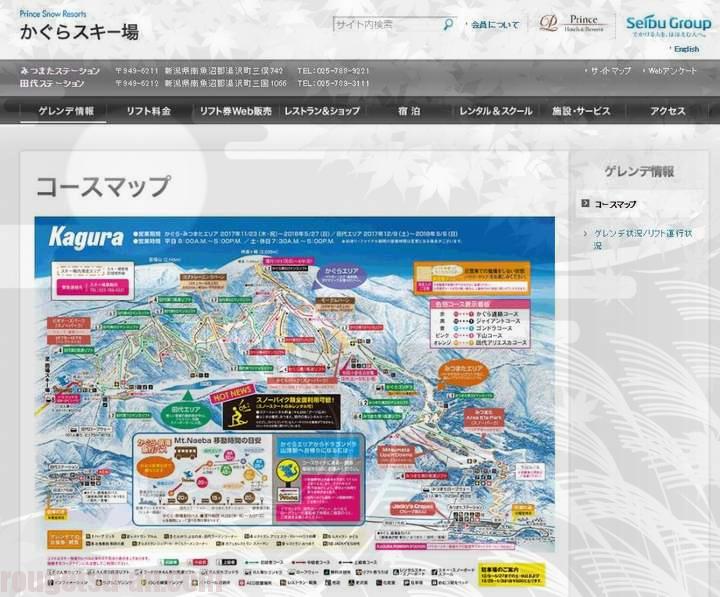
| ↓DATA from original “Pia Ski Map” at the time(1990) | |
| Number of lifts(incl. gondola) |
27 lifts(incl. 1 gondola) |
| height difference | 1225m |
| Maximum distance | 6000m |
| Number of courses | 20 courses |
| Lift ticket fee | \4500(One-day common pass) |
| Access | 14km from Yuzawa IC of Kan-etsu Expressway (Alternatively 55km from Tsukiyono IC) |
It’s near Naeba. So the basic conditions are almost the same as Naeba.
The difference is that it is slightly closer to the Yuzawa IC than Naeba, and the atmosphere of the ski resort. Unlike Naeba, it’s not “stylish” but has a local feel and the facilities are old.
So the benefits are:
- Access is easier from the highway than Naeba
- It’s less crowded !! because it’s not “stylish(^^;)
For the same reason as Naeba, the snow quality here is also good. This powder snow is precious within a day trip area from Tokyo. The altitude at the entry point is lower than Naeba, but that at the summit seems to be higher here. Perhaps because of that, I personally remember the powder snow being slightly better here than at Naeba.”
That’s why I placed Kagura up one rank .
Three ski resorts are connected (lift passes are common), so the overall area is large enough to be satisfied. However, since the connecting point is only at the top, if you mistakenly go down the wrong mountain at the end of the evening lift operation time, it would be a pretty big problem. You will end up having to move by a local bus all the way to the parking lot where your car is “waiting”. There are some people who make mistakes occasionally, so please be careful!!
No. 8 White World OZE-IWAKURA (Gunma Prefecture)
⇒Oze-Iwakura Ski Resort Official Site
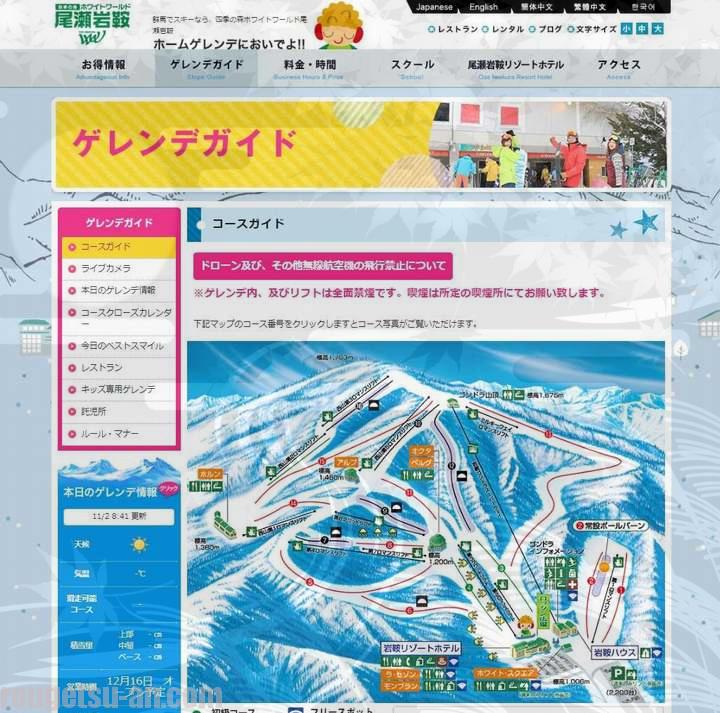
| ↓DATA from original “Pia Ski Map” at the time(1990) | |
| Number of lifts(incl. gondola) |
16 lifts(incl. 1 gondola) |
| height difference | 700m |
| Maximum distance | 3200m |
| Number of courses | 18 courses |
| Lift ticket fee | \4500(One-day common pass) |
| Access | 36km from Numata IC of Kan-etsu Expressway |
Unexpectedly not so many people are familiar with this ski resort.
It’s that “famous” Oze well known by the classic nursery rhyme “Natsu-no omoide( Memories from Summer)”.
This ski resort is also located in the direction of the Kanetsu Expressway area, which is easily accessible from Tokyo for a day trip. However, unlike going to Echigo Yuzawa ( known as the “day trip ski resort Ginza” ), you should get off at Numata IC just before the Kanetsu Tunnel. From exit of highway, it takes about one more hour drive on local roads. That is a bit long, but it’s worth enough.
Probably, as far as I know… or rather, personally, it was the undisputed number one favorite ski resort within a day trip from the capital area. After all, the snow quality was superb and the best.
Just to repeat what I touched on it a little at Naeba, typically clouds move from west to east. When moist snow clouds formed in the Sea of Japan cross ”Mikuni” Mountains range on the old border of Joetsu region, they drop heavy snow with a lot of moisture on the Niigata side (North side). Therefore, the snow quality there in Echigo Yuzawa area is generally heavy and wet.
Remaining snow clouds have less moisture, which means they are dry snow clouds. After crossing Mountains, they fall on the Gunma side, that’s why they become dry powder snow. It seems to be based on that kind of logic.
Due to such a mechanism, the snow quality is excellent at any ski resort wherever you go in this area. I have also been to Kawaba Ski Resort, which is more accessible (16 km down the highway), and the snow quality was similarly excellent, of course. However, Kawaba was a bit small. Therefore, I would like to highly recommend Oze-Iwakura , which is the largest ski resort in this area.
Although not as popular as “Major” ski resorts like Zao and Nozawa-Onsen, I think the moderate size of the ski resort is just right for a day trip without getting bored. On the other hand, you might get a little bored if you stay overnight… (^^;)
However, there is one difficulty with this ski resort.
The road leading to this ski resort is a dead end, because the national road (R120) that leads to Oku-nikko in the summer season is conversely closed during the ski season. This is similar to Chichibu’s power spot, Mitake-Shrine.
If there is a traffic jam, you have to wait until the person who went ahead comes out, otherwise you cannot move forward. The parking lot can also be full, making it impossible to park. Therefore, it is quite important to leave early. Regulars arrive early midnight and take a nap on-site.
Anyway, in conclusion, as a day trip area, it is easier to access than Naeba and Kagura.
If you go to Naeba, it takes quite a bit of time to drive slowly on the narrow road (R17) that often gets hit by blizzards.
So far, I have introduced my favorite ski resorts for day trips from 10th to 8th place. From here on, it’s time to introduce the major and huge ski areas!!
No. 7 Hakuba-Happo-One (Nagano Prefecture)
⇒Hakuba Happo-One Official Site
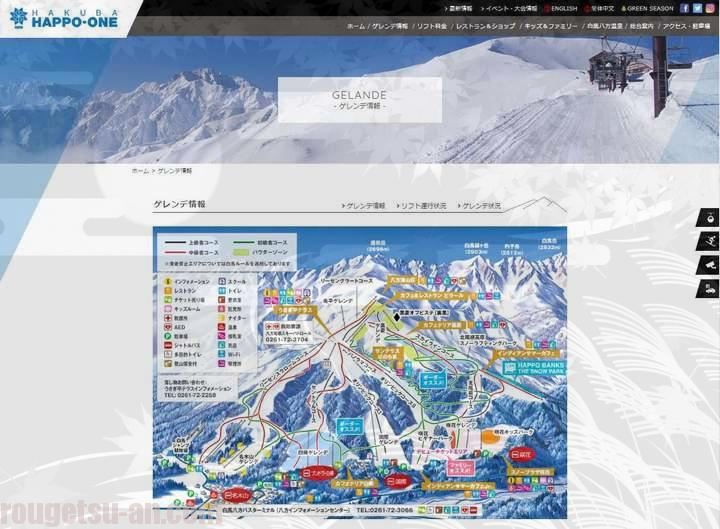
| ↓DATA from original “Pia Ski Map” at the time(1990) | |
| Number of lifts(incl. gondola) |
35 lifts(incl. 1 gondola) |
| height difference | 1026m |
| Maximum distance | 3900m |
| Number of courses | 13 courses |
| Lift ticket fee | \4500(One-day common pass) |
| Access | 59km from Toyoshina IC* of Nagano Expressway (*currently known as Azumino IC) |
It is the largest ski resort in Hakuba area, and also one of the largest single ski area in all of Japan. You may have heard of it as the venue for downhill and super-GS at the Nagano Olympics in 1998. The facilities are relatively old due to its history as a ski resort. Like other places in the Hakuba area, the snow quality here is also pretty good, and you can even enjoy a magnificent view on a sunny day.
At the time of the ski boom around 1990, there were quite a lot of visitors. But it had a large capacity due to its size, so I remember the lift waiting time wasn’t so long on weekdays when students can go. It is a huge ski resort where you can enjoy a leisurely stay for two nights and three days.
However, the required technical level here is somewhat high. There are many steep slopes and mogul slopes. If you’re in the mood for a relaxing resort, it might be a bit tough for especially beginners. Therefore, it has a slightly tougher rating than Zao and Shiga. On the other hand, advanced skiers may be 120% satisfied.
Back in the day, when the Nagano Expressway ended in Toyoshina, access to Hakuba was poor and it was a place where you had to put in a considerable amount of effort to go. However, with the full opening of the Nagano Expressway and the subsequent development of a fast road along the Takase River due to the Nagano Olympics, it has become much easier to get there. You can now imagine going there with almost no stress.
By the way, it seems that lift tickets are cheaper (¥1000 off?) through the shareholder benefits of NPD Co. Ltd, which has become an investor in this resort in recent years. If you go there often, you might want to check it out (the settlement month is July). They are also available on Yahoo Auctions.
No. 6 Zao Onsen Mountain & Snow Resort (Yamagata Prefecture)
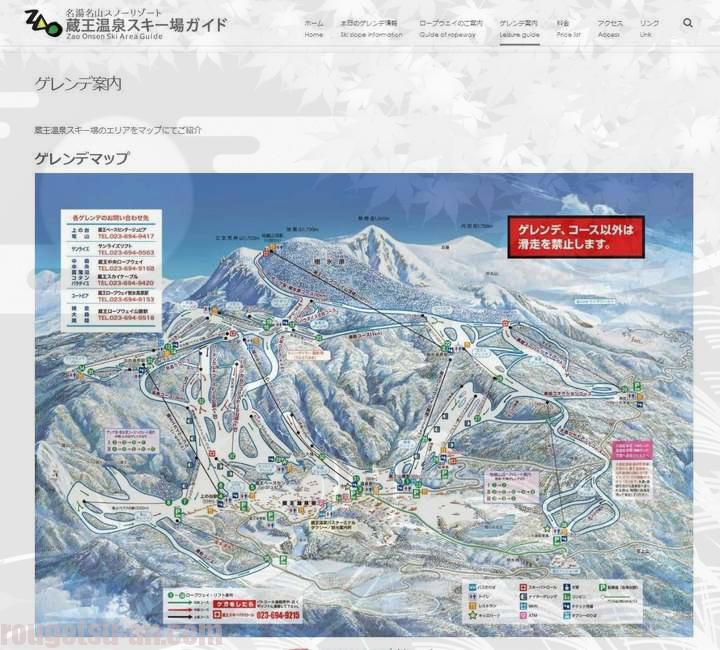
| ↓DATA from original “Pia Ski Map” at the time(1990) | |
| Number of lifts(incl. gondola) |
42 lifts(incl. 1 gondola)※There are two other large ropeways for 56 passengers and another huge one for 101 passengers. |
| height difference | 850m |
| Maximum distance | 8000m |
| Number of courses | 25 courses |
| Lift ticket fee | \4200(One-day common pass) |
| Access | 17km from Yamagata-Zao IC of Yamagata Expressway |
“Zao” is the correct pronunciation of “蔵王”.
It is a historic and massive ski resort that anyone who skis should visit at least once. It was founded in the Taisho era (about 100 years ago). My mother even skied there when she was young, lol. It is also great that there is an old hot spring.
Zao’s features are… First of all, it’s huge. If we’re talking about simple area, I’m pretty sure that it is the largest in Japan. However, the facilities are generally old, the lifts are slow, the connections of them are not smooth, the food is bad… and there are many other points of dissatisfaction. But, that’s also the “flavor” of an old establishment.
Despite being a huge ski resort, there are quite a few easy courses that beginners can enjoy (even around the top of the mountain). On a sunny day, it’s also fun to “take a walk” and explore the entire mountain skiing along the narrow connecting courses while enjoying the magnificent scenery.
However, please be aware that there are several dangerous areas called “Kabe”(meaning “Wall”) that beginners cannot escape from if they let their guard down and enter. Especially the famous “Yokokura-no-Kabe” is a 38-degree mogul slope. 38 degrees is like… if you lean forward with your board on, it feels like more than 90 degrees, like a bungee jump upside down. It’s a usual sight of Zao where even somewhat advanced skiers get lost and cry.
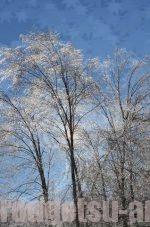 Another thing that Zao is famous for worldwide is the “Juhyo” (frost-covered trees). Personally, I’m more familiar with Suntory’s juhyo(white liquor), lol. Generally, when people think of juhyo, they imagine something like a snowflake like this photo(⇒). It’s lovely and beautiful, isn’t it?
Another thing that Zao is famous for worldwide is the “Juhyo” (frost-covered trees). Personally, I’m more familiar with Suntory’s juhyo(white liquor), lol. Generally, when people think of juhyo, they imagine something like a snowflake like this photo(⇒). It’s lovely and beautiful, isn’t it?
But in reality… How do I put it, they look like bowling pins or “Matryoshka” dolls…kind of objects like alcoholic fat person here and there. It may look like a somewhat strange sight, but… well, it’s not that beautiful (^^;)
Well, this is a personal opinion based on my own judgment and prejudice, so please forgive me. Many people are surprised when they get there. If you want to see it, or rather, if you’re going to Zao, you should see it at least once. Try to get to the “Juhyo” field around the top of the mountain.
Now, as for how to get to the top of the mountain… There is also the famous “giant ropeway (with more than 100 passengers!)” of Zao specialty. Back in the day, when I went there, I must line up early in the morning (I remember it was before 6 o’clock?) to get numbered tickets. Then I finally got on with a platinum ticket and was taken to the top of the mountain in a flash. But the next day, I was a little disappointed to find out that I could have gone there by taking the lift, lol.
It was the ski boom back then, so it was quite crowded even on weekdays. I remember that not only the slopes were crowded, but also the waiting time for the lifts was quite long. I wonder how it is now.
By the way, when we say ‘Zao’, it generally refers to ‘Yamagata Zao’. However, there is another ski resort called ‘Miyagi Zao’ which has a similar name. Please be careful not to confuse the two, although I don’t think many people make that mistake.
No. 5 Nozawa Onsen Ski Resort (Nagano Prefecture)
⇒Nozawa Onsen Ski Resort Official Site
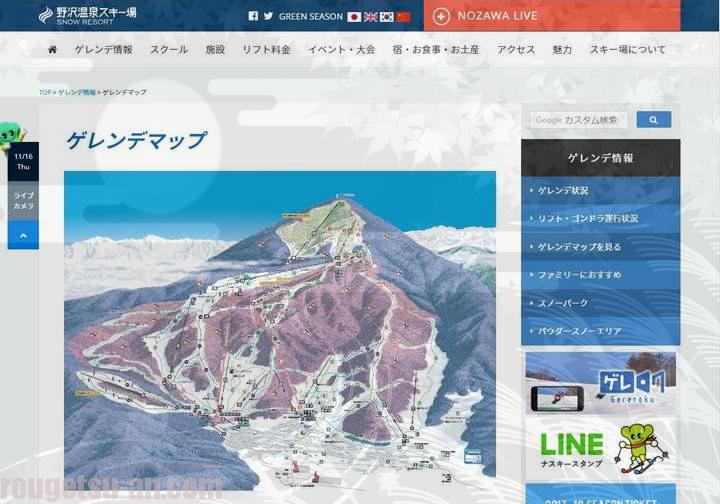
| ↓DATA from original “Pia Ski Map” at the time(1990) | |
| Number of lifts(incl. gondola) |
32 lifts(incl. 2 gondola) |
| height difference | 1090m |
| Maximum distance | 5500m |
| Number of courses | 19 courses |
| Lift ticket fee | \4300(One-day common pass) |
| Access | 55km from Shiozawa-Ishiuchi IC of Kan-Etsu Expressway |
This is also a long-established huge ski resort like Zao.
Each course is relatively small, but they are connected like a maze and become a huge theme park as a whole. The snow quality is standard for Shinetsu (not bad). As the birthplace of modern skiing in Japan, the facilities are old, but that gives off a good old-fashioned atmosphere.
And the charm of Nozawa is undoubtedly the atmosphere of one of Japan’s leading hot spring towns (of course, Nozawana is also delicious!!). It is worth visiting even if you only go to the hot springs without skiing. Like Happo-One and Zao, it is a ski resort where you can enjoy a leisurely stay of two or three nights.
By the way, the hot spring town is on a fairly steep slope, and I remember being impressed by the postman who delivered mail by drifting on a snow-covered slope with a chain-wrapped Cub [motorcycle].
It was crowded here back then too. And since we had to drive on the local roads, the driving was pretty tough. When I went there after the Nagano Expressway was fully opened, I was surprised to arrive in no time!!
By the way, the former Nordic combined team gold medalist, Takanori Kono, belonged to Nozawa Onsen Club, just for information.
So far I have introduced major ski resorts that skiers would want to visit at least once, from 7th to 5th place. Next, from here on, I will introduce my genuine, truly favorite ski resorts. If I could only go to one place before dying… which one should I choose? It’s a tough choice between these four places. Hmm, it’s hard to decide.
Here you go.
No. 4 NISEKO UNITED (Hokkai-do Prefecture)
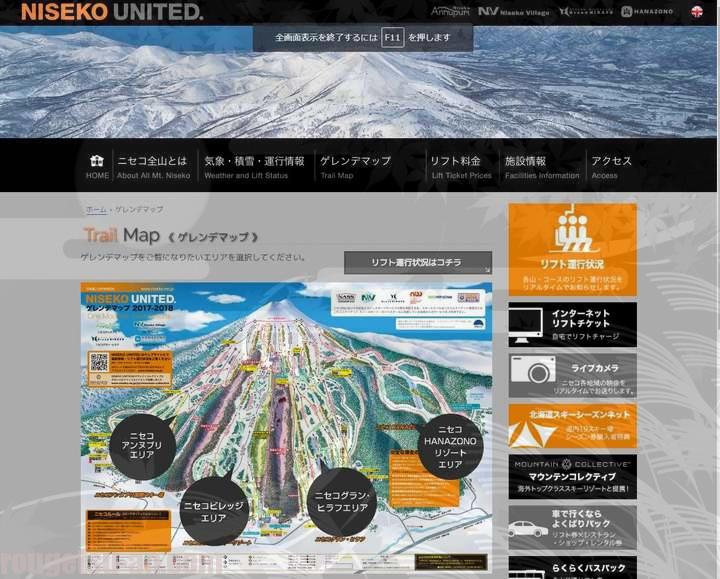
| ↓DATA from original “Pia Ski Map” at the time(1990) | |
| Number of lifts(incl. gondola) |
42 lifts(incl. 1 gondola)※There are two other large ropeways for 56 passengers and another huge one for 101 passengers. |
| height difference | 850m |
| Maximum distance | 8000m |
| Number of courses | 25 courses |
| Lift ticket fee | \4200(One-day common pass) |
| Access | by plane |
This is a ski resort, where I experienced the long-awaited “Hokkaido skiing” for the first time.
The powder snow was like nothing I had ever experienced before. The quality of the snow was unbelievably high. I still have vivid memories of it (much better than the snow at Oze-Iwakura, which I mentioned earlier). The courses are generally wide, probably because there is plenty of land in the northern region. Although it was quite popular, it felt less crowded than ski resorts in Shinetsu(Nagano, etc.) and other areas.
That’s why, it feels great to ski here!
There are no obstacles or people standing still, and you can ski at high speed in parallel across the entire width of the wide course. Of course, it may be just my imagination, but I feel like I became two levels better at skiing here.
The overall size of the resort is not “super huge” for Hokkai-do, but the accessibility and quality of the snow more than make up for it. In fact, Furano, which I will mention later, gives a much larger impression, but the snow quality in Niseko was better. It’s no wonder that many foreigners come back here again and again nowadays.
The only thing that bothered me was… it might have been just a coincidence, but it snowed heavily every day. And it was really bad blizzard like a storm lol.
It was a level of snowfall that I had never experienced before in “Honshu(the main island of Japan)”. Seriously, it was zero visibility, and I couldn’t see anything 5 meters ahead of me. While skiing near other people and talking to them, I would slowly move forward, and then someone would say, “Oh, there’s a cliff. Be careful.” It was my first time experiencing something like that, and it felt like a real survival simulation. Well, I guess that’s why the snow is so good.
Access from Chitose Airport (Sapporo city) seems to be the most common, but because of its reasonable cost, I went on a tour departing from Hakodate Airport that included sightseeing in Hakodate city. However, since the transportation within Hokkaido was by bus (about 170 km?), it wasn’t so bad (no traffic jam).
On sunny days, you can see also beautiful Mt. Yotei-zan. I want to go there again someday. Highly recommended.
No. 3 Prince Snow Resort Furano (Hokkai-do Prefecture)
⇒Prince Snow resort Furano Hokkaido Official Site
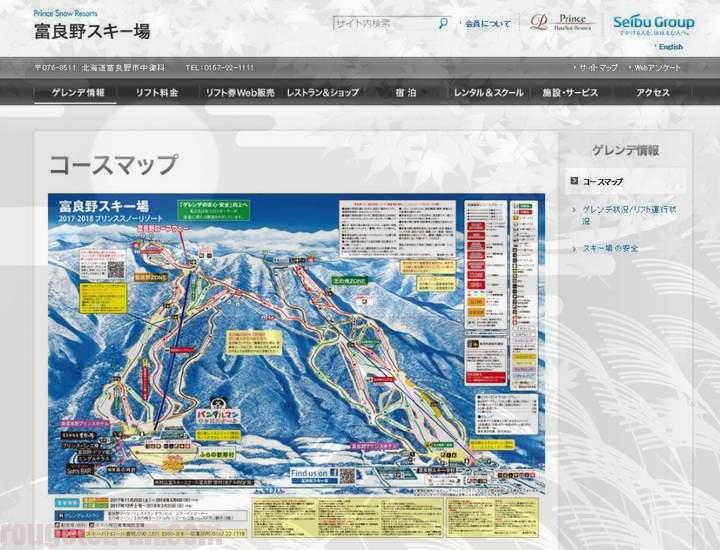
| ↓DATA from original “Pia Ski Map” at the time(1990) | |
| Number of lifts(incl. gondola) |
16 lifts(incl. 2 gondola) |
| height difference | 974m |
| Maximum distance | 4000m |
| Number of courses | 20 courses |
| Lift ticket fee | \4500(One-day common pass) |
| Access | by plane |
Furano is famous for many things, including the well-known lavender fields and screenwriter So Kuramoto.
Tomamu, a similar huge ski area nearby, has become part of the Hoshino-Resort group, but Furano seems to be doing well as an unchanged “Prince Resorts”.
I had always personally admired it as “the best ski resort in Japan”.
In the days before the internet, I heard directly and indirectly from various sources that its size, scale, snow quality, straight skiing length, lack of congestion, etc. were already internationally acclaimed. I can only imagine that there are no ski resorts in Japan that can compare. However, I had no chance to visit it until I was in my 30s, long after the ski boom had passed, when I was a company employee.
My impression after actually visiting the place… Unfortunately, it’s not the best, maybe third place.
The snow quality is pretty good, but not as good as I expected. Personally, I have a strong impression that Niseko has more super powder. The long course where you can enjoy straight skiing is also quite good, but it’s not as good as I thought. As of that, personally, I would like to recommend Appi.
Maybe I was expecting too much and the bar was raised too high. It was a bit of a pity evaluation, like meeting your first love again and being disappointed…lol.
But basically, it’s no doubt a wonderful ski resort, of course. As a skier, it’s definitely a place you want to visit at least once in your life.
Tour packages are cost-effective and easy to use. Therefore, many people inevitably stay at Prince hotels. The facilities are well-equipped, so it is possible to complete everything, including meals, inside the hotel. However… if you go all the way to Hokkaido, you would want to try the delicious locally produced food, right?
So, I tried to go outside as much as possible….
However, the difficulty level of finding good food was high compared to major cities in Hokkaido such as Sapporo and Hakodate. There were sushi restaurants, but… it was quite risky lol. Well, even though it’s Hokkaido, it’s an inland mountainous area, so that would be natural.
In such a situation, the izakaya(Japanese pub) “Kumagera” that appeared frequently in the classic TV series “From the North Country” was delicious(it seems to have been used by the filming crew). It’s also a famous restaurant where you can enjoy wild game meat dishes such as bear and deer, and it’s reasonably priced overall.
I want to go there again someday.
No. 2 SHIGA KOGEN (Nagano Prefecture)
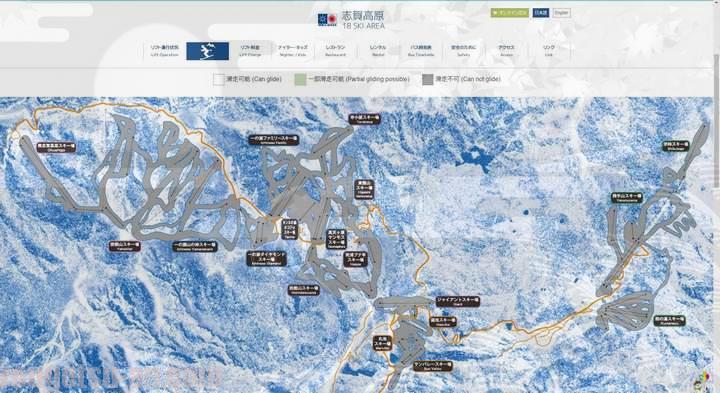
| ↓DATA from original “Pia Ski Map” at the time(1990) | |
| Number of lifts(incl. gondola) |
75 lifts(incl. 2 gondola)※There is also one large ropeway. |
| height difference | 895m |
| Maximum distance | 5000m |
| Number of courses | 74 courses |
| Lift ticket fee | \4500(One-day common pass) |
| Access | 154km from Takasaki IC of Kan-Etsu Expressway |
Known to every skier, this is a long-established super-large ski resort that Japan is proud of.
It’s like the Disneyland of the ski world. Of course, the snow quality is quite good, and anyway, it’s huge. Even if you stay for a week, you might not be able to go everywhere, from corner to corner. It’s recommended to go for two nights and three days at least.
Day 1: Center area such as Ichinose and Takamagahara
Day 2: Yokote Mountain, Kumanoyu area
Day 3: Yakebitai Mountain, Okushiga area
Many people visit in this way.
The overall structure is characterized by small ski resorts being concentrated and connected.
It’s the opposite of other big ski resorts like Furano and Appi Kogen, where you can ski down long distances from the top at high speed without stopping. However, this style is also fun. It’s exciting to move from mountain to mountain along narrow connecting paths and ski, as if you’re on a tour.
It is also a scene from the movie “Take Me Skiing” that is well-known among middle-aged people.
It was probably filmed at the Shibu Pass Lodge in the Yokote Mountain area. Although I forgot the details, the story was about the main characters (including Hiroshi Mikami) crossing the mountain from Shibu Pass to Manza Ski Resort while carrying night lighting equipment on their backs.
(I don’t think it’s possible to cross the mountain only skiing down without “up-climbing”).
Recently, I have only gone on motorcycle tours in the summer, and I have no idea what the ski season is like, but in the past, it was just a crowded
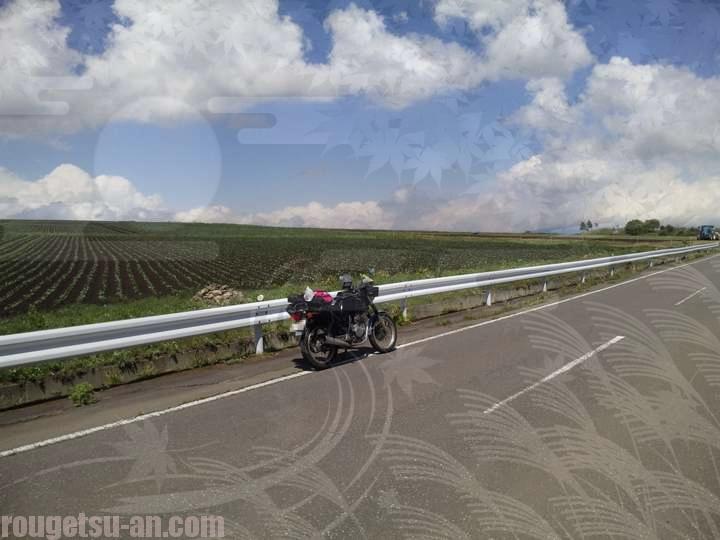
First, I couldn’t find a place to stay. As a student with free time, I tried to reserve a room on weekdays when it was less crowded and cheaper, but all the reasonable inns were fully booked. To begin with, the price of inns there tended to be high. At that time, the average price of a ski resort inn per night with two meals was about 6,000-7,000 yen, but in Shiga, it was easily over 10,000 yen.
So, I took lodging in the hot spring town “Shibu Onsen” at the foot of the mountain, away from the ski resort, and “commuted” every day with my ski board on the roof carrier of my car. It was a loss of about two hours round trip, but it turned out alright in the end, because I could also enjoy the hot springs (the atmosphere of Shibu Onsen with an outdoor bath is the best!! You could also see monkeys walking around), and in addition, the rental fee was just about half the price.”
The lift tickets themselves were standard-priced, but the kind of discount coupons that are commonly available at other ski resorts were not available at all. Moreover, even if you purchased them for a long period (like a 3-days pass), it was not so reasonable. That was a bullish business!! The slopes were crowded, and it felt like you had to avoid people while skiing. The lift waiting time was quite long too. It would have been much tougher if you went on weekends. I wonder how it is nowadays?
Access was also quite difficult.
At that time, the expressway was not fully open to traffic. The Joshinetsu Expressway was not open yet, and the Nagano Expressway ended at Toyoshina IC(current Azumino IC). So, I went down the Chuo Expressway to Sudama IC, got off the highway there, and drove down the local road, crossing the Nobeyama from Kiyosato, and from Saku to Komoro and Nakano overnight. By the time I crossed the river in Yudanaka Onsen, it was just the time of sunrise, and I was impressed by view of the bridge shining in the morning sun.
As I mentioned in the part of Nozawa Onsen, when the Nagano Expressway (and Joshinetsu Expressway) opened later, I arrived too quickly and was shocked to think, “I worked so hard driving, but it was actually so close…”
Despite being such a difficult place to get to, it has such a strong ability to attract customers. There is no doubt that it is a monster-class ski resort.
Now, finally, the long-awaited first place.
If I were asked where I would like to ski for the last time tomorrow if I were to die… I would like to go to this ski resort without hesitation!!
Now, where it is?
No. 1 APPI KOGEN (Iwate Prefecture)
⇒APPI Snow Mountain Resort Official Site
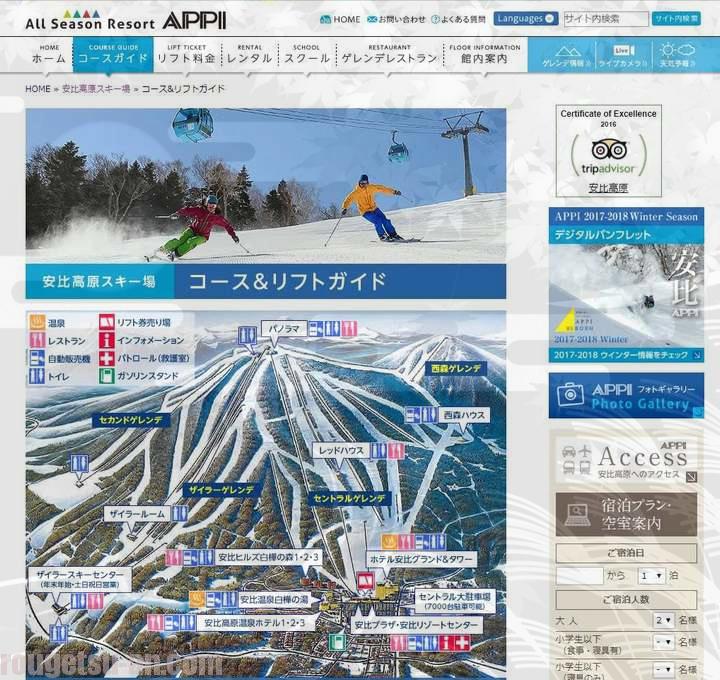
| ↓DATA from original “Pia Ski Map” at the time(1990) | |
| Number of lifts(incl. gondola) |
30 lifts(incl. 2 gondola) |
| height difference | 795m |
| Maximum distance | 5500m |
| Number of courses | 24 courses |
| Lift ticket fee | \3600(One-day common pass) |
| Access | 13km from Matsuo-Hachimantai IC of Tohoku Expressway |
Thank you for waiting!
Although this is an extremely personal and 120% self-satisfying ranking, it has earned the top spot of glory!!
*・゜゚・*:.。..。.:*・゜(゚∀゚)゚・*:.。. .。.:*・゜゚・*!!!!
It is my most favorite ski resort. I love it so much that I’m practically in love with it (^^).
I’ve visited there several times, not only during my free time as a student but also after becoming a working adult.
The biggest feature of Appi Kogen that sets it apart from other resorts is undoubtedly…
how incredibly far away it is (lol).
Anyway, access to Appi Kogen is not easy.
I wouldn’t say it’s too hard (driving is relatively easy since it’s mostly highways along the way), but inevitably, it takes a lot of time and money. After all, it’s over 600 km one way from Tokyo, and it takes more than 8 hours to drive almost entirely on the highway. In addition, the round-trip highway tolls are about 24,000 yen, and more than 100 liters of gasoline are consumed.
If you go with only two people because there is no one to go with, even if you share the cost, it will cost you nearly 20,000 yen per person for transportation alone. It’s not easy to compare, but in a sense, it’s more difficult to get to than going to Hokkaido.
As a result, it’s inevitably… empty no matter when you go!!
Especially on weekdays, there are only a few people on the slopes.
At places like Shiga Kogen, you have to avoid other people while skiing, but at Appi, the wide course width means that there is almost no possibility of collision even if you fly at high speed. And the waiting time for the lift is almost zero seconds. In fact, the waiting time for the gondola is “zero seconds”, so I don’t even use the small “lift” lol.
When there are fewer people…, everything is inevitably cheaper!!
According to my recollection at the time, the three-day lift ticket cost 8,100 yen, which is equivalent to 2,700 yen per day. The inns were generally priced around 4,500-5,000 yen. In other words, the local costs (excluding transportation expenses) were about half of those at Shiga Kogen. Therefore, if you stay for a long period like three or four nights, even after deducting the expensive transportation costs, it will be quite reasonable or even cheaper.”
Of course, just breaking even on the costs is not a sufficient reason to travel all the way a far away place. However, one of the major attractions of the Appi Kogen Ski Resort is …
its incomparably wonderful high-speed course.
I have been to Furano and Niseko in Hokkaido, but personally, this place is by far the best. The reasons are:
- The original snow quality is good, with the highest level of powder snow.
- The ski resort is huge, and you can slide down from the top of the mountain to the bottom in a straight line for 5-6 km.
- The course width is ridiculously wide.
- (Additionally, there are no people around lol)
- The course is carefully managed by a snow groomer.
Especially the last point is noteworthy. I don’t have much experience with it elsewhere.
Even the already wide course width was carefully groomed from end to end. Especially in early the morning, it’s the best. When you take the gondola to the top, you are greeted by a slope like a “highway” that is still untouched (except foe the wave-like marks of the snow groomer).
You can glide non-stop from the top to the bottom of the mountain for about 6 km.
The course width is so wide that you can ski down with high-speed long turns, rather than parallel turns. It feels like you are sliding on a rail or carving with a sculpting knife, in other words you are riding right on top of the edge of ski biting into the snow surface. There are no obstacles (such as people taking a break), so you can take any course you like and ski freely. It’s a slope where you might mistakenly think you’ve become extremely good at skiing (although it might not be enough for people who are at a competitive level).
When you reach the bottom, the gondola welcomes you.
There are no people waiting in line, and the waiting time is zero. Only staff are waiting, not skiers. You can slide directly to the boarding point of the gondola without waiting in line, take off your skis, and get on the gondola immediately. So, there is no need to use the small lift anymore.
It takes about 10 minutes to get back to the top of the mountain on the gondola, and then it repeats. I remember being able to do this about 15-20 times a day. It’s a distance of over 100 km if you calculate it, which is amazing!
This sense of scale is unique to Appi. Furano is relatively close, but I haven’t experienced anything like it elsewhere. It didn’t feel like Japan anymore. I wonder if skiing in Canada would be like this, but I don’t know because I haven’t experienced it myself (^^;)
I think various elements have come together to create such a rare ski resort, but the fact that it was far away and inconvenient was a big factor. For skiers, it’s like heaven on earth, but whether it can be profitable in the long run is another matter.
Is it like a flower that bloomed in an era? I hope it doesn’t disappear.
![]()
By the way, at that time, it was quite satisfying to say “I went to Appi!!” and there were quite a few cars with rabbit-designed stickers of “APPI” (↑ like this) proudly attached. Of course I was one of them too, lol.
This is quite a digression, but… it’s nice for poor students that not only are the inns cheap, but the inns around there (Appi? Iwate?) are kind of hospitable, you know. One time, it was snowing outside and it was a silent night, and I was drinking Japanese sake with my friend under a kotatsu (a heating table covered with a blanket), when the sliding door behind us opened without a sound. I thought, “Oh no, it’s a ghost!” but it was the old lady who runs the inn, who brought us onigiri (rice ball) and other treats. It was a warm and welcoming feeling.
That’s the Appi Kogen Ski Resort, full of such memories.
It may be quite difficult to get to, but recently there seem to be tours that combine late-night buses and Shinkansen (bullet trains) or flights. If you’re interested, you might want to consider it.
Introducing impressive ski resorts outside of the ranking by area.
I have introduced the top 10 ski resorts in ranking format so far.
However, there are many other ski resorts that I have visited. So, let me introduce them by area. There may be some harsh comments, but please forgive me as it is just a personal opinion.
I hope this will be helpful for those who are undecided.
Here we go.
Tohoku Expressway Area
Shizukuishi Ski Resort
This ski resort hosted Alpine World Cup and World Championships when Alberto Tomba and Kimura Kiminobu were active in the past. I visited it twice on my way to Appi kogen: skiing in Shizukuishi on Monday and then heading to Appi from Tuesday to Friday. Something like that.
I remember that the ski resort was quite spacious, and the snow quality was very good. The main slopes were long, and the number of visitors was unusually small. Additionally, the lift tickets were also affordable. So far, it sounds pretty good, doesn’t it?
However, it seems that this place often experiences inclement weather due to geographical reasons.
When I visited, it was cloudy and snowing heavily both times. Similar conditions occurred during the aforementioned World Championships, and the schedule was changed multiple times. A few events were even canceled due to the adverse weather. However, you could argue that the snow quality is good because it snows frequently. (^^;).
Another reason why I don’t personally enjoy this ski resort is that the slopes are quite challenging. Well, it’s because they host the World Cup, so the runs are primarily designed for professional racers, making this place suitable for advanced skiers. The downhill course is even named “Umanose” (which translates to “horseback”), implying that it’s an inverted bank. Even attempting to turn or carve at both ends of the course isn’t a straightforward task (lol).
Professionals compete for small differences in such high-difficulty places, but for “leisure & resort” skiers like me, it’s very difficult to ski. To put it bluntly, it’s just tiring and not enjoyable at all. Based on my experience, it was even more deserted than Appi, with almost no one there. The reason for this seemed to be the difficulty of the courses.
Advanced skiers, please feel free to test your skills. I, as an amateur, will go straight to Appi (^^;).
Mini ski resorts around Fukushima (Alts Bandai, Nekoma, Grandeco, etc.)
When I was an office worker, I used to visit these areas quite often because there was a company-owned recreational lodge near Lake Inawashiro. Although it’s not a day trip distance from Tokyo to Fukushima, it’s relatively close to Tokyo ーabout 300 km awayー making it an easy area for busy office workers to enjoy skiing for one night and two days.
The downside is that there are no ski resorts that can be definitely recommended.
While there are many small slopes in the Inawashiro area, but there are surprisingly few large ski resorts where you can enjoy an extended stay. This holds true not only for the Fukushima area and Tochigi prefecture, but also for the entire Tohoku Expressway region. Due to the gradual increase in elevation, it doesn’t snow as readily even if you drive for a long time. In contrast, if you travel the same distance, you can easily find snow in the Joshinetsu(Nagano-Niigata) area.
I used to visit Alts Bandai, the largest ski resort in this area, but I found it tedious after skiing for a day. The snow quality was decent, neither bad nor particularly remarkable.
I explored various other ski resorts, but the results were unsatisfactory.
Among them, Nekoma in Urabandai had excellent snow quality. However, it was bitterly cold (T_T). Despite the clear sky, the north wind blew so fiercely that it felt like I was going to freeze to death. Perhaps that’s why the snow quality was good. The ski resort is small and not easily accessible (it’s even further from the highway than Alts Bandai).
I have visited Grandeco, Inawashiro, Inawashiro Resort (and perhaps a few others) before, but they were relatively small, and I don’t recall much about them.
I believe these places are ideal for families with young children who want to enjoy sledding and snow play without purchasing a lift ticket for the entire day. However, they are not suitable for those seeking an intense skiing experience.
Personally, I don’t think it’s worth going there unless you have a specific reason to do so. If you’re looking for a day trip skiing destination, I recommend heading to Oze-Iwakura in the Kanetsu area.
Hunter Mountain Shiobara
I mentioned that it’s a bit challenging to do a day trip to Fukushima, but you can opt for a day trip to Shiobara (Tochigi Prefecture) which is right next to Fukushima. The largest ski resort in this region is Hunter Mountain, and it has gained popularity recently. I visited there only once a long time ago. The facilities were clean and had an American… or rather Western vibe, and the overall atmosphere was stylish.
However, the ski courses were subpar.
After descending a bit from the mountaintop, I encountered a perplexing layout for a long course that lacked any significant elevation change compared to the base area. The main slope, which stretched over 1 kilometer, was quite unconventional ーit demanded a combination of skating and paddling to make progress.
The snow conditions were decent ーneither slushy nor too soft, but rather somewhat hard, if I recall it correctly. Unfortunately, the Tohoku Expressway doesn’t gain elevation easily, no matter how far you drive, so it’s not particularly great for skiing. If you’re seeking a day trip destination, I recommend heading to the ski resorts around Echigo-Yuzawa via the Kanetsu Expressway. Alternatively, you could put in a little more effort and explore Oze-Iwakura or Naeba.
Mini Ski Resorts in the Day Trip Range from the Kanetsu Expressway Direction (Gunma-Niigata)
Echigo Yuzawa Area (Including GALA Yuzawa, Jo-etsu Kokusai, and Kandatsu)
From Nerima IC, it takes just over two hours by expressway, or 1 hour and 20 minutes by Shinkansen(bullet train) from Tokyo. On the other side of the Kanetsu Tunnel lies the go-to area for day-trip skiers from the Greater Tokyo area. Whenever I had just one free day or was short on time, I often visited this region. All the ski resorts are conveniently lined up along the Kanetsu Expressway, making it easy to access them after exiting the highway. In terms of accessibility, it’s hard to find a better location anywhere else.
That being said, since everyone has the same idea, it has led to in chronic traffic congestion on the Kanetsu Expressway. While I’m not sure about the current situation, it used to be quite challenging. Friday nights were especially tough. I recall taking the highway from the Tokorozawa IC around 0:30, and even as the sun rose, I found myself still near Yoriiーa sight that occurred frequently. I’ve witnessed plenty of people relieving themselves on the roadside (even though it’s technically the shoulder but it’s on the highway!), because the service area was full and they cannot enter. So unless there’s a special reason, I usually stick to weekdays when it’s less crowded. I wonder how it is now?
Although all the ski resorts are quite small, if I had to pick the largest one, it would be Ishiuchi Maruyama Ski Resort. When you buy a lift ticket here, it becomes a Five-Mountain Common Pass, allowing you to freely move between the following five locations:
- Ishiuchi Maruyama
- GALA Yuzawa
- Yuzawa Kogen
- Ishiuchi Hanaoka
- Nunoba
This system somewhat compensates for the smaller size of each ski resort and resembles a miniature version of Shiga Kogen (Nagano). Well, even with that, you’ll get bored with the compactness pretty quickly!
Among other places, I’ve been to Joetsu Kokusai Ski Resort a couple of times. A friend had connections with the Green Plaza Hotel (attached there), which made those visits possible.
I also visited Maiko Kogen familiar with Michael Tomioka’s commercials (no one remembers, haha), where my buddy H managed to snag a lift ticket as a prize, so we went there for free.
And then there’s Kandatsu Kogen, located just a bit up along route 17 from Yuzawa town. Back in the day, they used to give out complimentary or discounted tickets, and I have vague memories of going there a few times. Even now, you’ll often find deals for it on coupon sites.
As for the rest, I don’t remember much, but I do recall visiting Iwappara and Yuzawa Nakasato. Those memories still linger!
…Well, there are various things to consider, but the snow quality at all these places is poor. It’s heavy and slushy, like a sherbet. Perhaps it’s a geographical limitation, but there’s not much we can do about it. And apart from the interconnected slopes at Ishiuchi Maruyama, everywhere else is quite narrow.
In the end, proximity is crucial in this area; accessibility is everything.
Thanks to GALA Yuzawa, which conveniently connects to the Shinkansen (bullet train), some folks can ski until 3:00 PM and be home by 6:00 PM. The Kanetsu Expressway used to be congested around Nerima IC, but with the opening of the Ken-O Expressway, it has become much more user-friendly. I believe traffic has eased up compared to the past.
Well, fundamentally, there isn’t a ski resort where I think, ‘I really want to go there!’ Even though the Shinkansen is convenient, I don’t really feel like making the daring trip to GALA Yuzawa (laughs).
Ideally, I’d be willing to push a bit further up Route 17 and head to Kagura, Mitsumata, and Tashiro mentioned above. Or perhaps all the way to Naeba. But well, when time is tight, that ‘bit further’ becomes quite challenging, doesn’t it? (^^;)
Kawaba Ski Resort Offers Powder Snow on the Gunma Prefecture Side
Kawaba, located in the vicinity of the previously mentioned Oze Iwakura(which ranks 8th), shares similar snow conditions. On the front side of the Kanetsu Tunnel (the Gunma Prefecture side), it boasts excellent snow quality. I’ve visited Kawaba a couple of times, and it truly delivers the expected powder snow experience.
However, let’s just say it’s a bit… ‘small.’
For those seeking an intense day of skiing, once you’ve come this far, you’d typically choose Oze Iwakura. But if you’ve exhausted other options, it might be worth giving Kawaba a try.
Shinshu/Hakuba area (Nagano)
As for my favorite ski resorts in the Nagano area, I previously mentioned Happo One, Nozawa Onsen, and Shiga Kogen in the rankings. However, I’ve also explored several other slopes beyond those. Let’s highlight a few representative ones to introduce.
Hakuba Valley Kashimayari
Initially, I avoided the Hakuba area due to its limited transportation. However, after the construction of the Nagano Olympic Road, I sporadically visited the region. The route from Azumino IC is now a smooth road with almost no traffic lights, making it a stress-free experience compared to the past. Truly, we live in good times!
The Hakuba area boasts scenic beauty and well-balanced snow quality across all resorts. One that left an impression on me is San Alpina Kashimayari (now known as Hakuba Valley Kashimayari). It’s a compact and pristine ski resort with uncrowded slopes. I also recall that lift tickets were reasonably priced.
If you are considering a visit to the Hakuba area, Happo One is the main option. However, I believe Kashimayari is an excellent choice for families with young children seeking a smaller, family-friendly ski resort.
Venus Line Area ーKurumayama-kogen, Shirakaba 2in1, Echo Valley (Nagano)
The Venus Line is more of a motorcycle touring mecca than a skiing destination. When winter arrives and snow blankets the area, the surroundings transform into ski resorts. Relatively small ski slopes are scattered here and there.
Personally, I once visited three ski resorts in this area during a two-night, three-day trip because there was ol’dad’s company-owned lodge at Lake Shirakaba. From the largest, I skied at the following three places:
- Kurumayama Kogen
- Shirakaba 2in1
- Echo Valley
As for my impressions…
It’s hard to put into words, but I’d say it’s “iffy”.
Not bad, but not particularly outstanding either. Overall, most ski resorts in this region are narrow with small elevation differences. Even at the largest one, Kurumayama Kogen, I found myself getting a bit bored by the morning. Shirakaba 2in1 lacks significant elevation changes, and Echo Valley feels quite confined, like a shallow bowl. Well, perhaps they cater more to family skiing.
If I were to highlight the strong points, the beauty of the Yatsugatake Mountains visible from the summit of Kurumayama Kogen was exquisite. It presented a different aspect compared to our summer tours, mainly because it was blanketed in snow. Truly a breathtaking view, although it’s only visible on clear weather days.
However, on the flip side, the vast highland landscape that screams ‘Venus Line!’ in that area is completely hidden during winter, which is a bit of a shame.
Well, I suppose that’s an area best explored by motorcycle, don’t you think? (^^;)
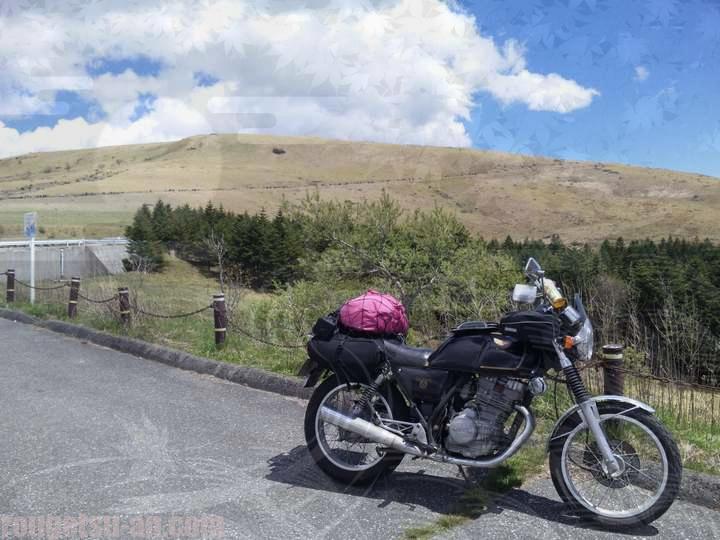
Mount Ontake Ski Resort
Actually, during my younger days, I lived in Hamamatsu for a while. Hamamatsu is a pretty nice place – it’s warm, close to the sea, and the people are all kind. The food is delicious too. However, for ski enthusiasts, it’s a bit challenging. If you open a map, you’ll notice that there are no ski resorts nearby, and even the access roads (i.e., highways) to head north straight toward Nagano are absent. So, you end up having to travel to Nagoya (northwest) once and then turn around (northeast) just to hit the slopes.
Despite this, I managed to go skiing a few times, and one of those occasions was at Mount Ontake. It’s the largest ski area accessible with some effort. The high elevation is supposed to promise stunning views on clear days, but unfortunately, it tends to be cloudy quite often (I have never seen that).
Overall, my impression? Well, it’s hard to say.
Unless you have no other options, it’s not the most convenient place for skiing. Living in the Tokyo metropolitan area, I realized how fortunate we are.
Manza Onsen (Gunma)
Strictly speaking, it’s in Gunma, but it’s a neighborhood that nearly borders Nagano.
Manza is located on the opposite side of the Shiga Kogen Highlands pass. In summer, it’s directly connected via the Shiga Kusatsu Road, also known as the ‘Skyline Road’. However, during winter, it’s closed off, so you can’t go to the other side.
My impression of this place? Well, it was downright cold!
I wonder why – perhaps it’s the north-facing slope. Maybe it’s due to the somewhat notorious north winds. When I visited, it was a brilliantly clear day, but the cold forced me to retreat midway. On the bright side, the snow quality was excellent.
Getting there by car was quite inconvenient due to the lack of transportation options.
It might be more suitable for those who want to enjoy a leisurely stay while soaking in the hot springs.
There are many other ski resorts I’ve visited, but…
Above, I’ve highlighted representative ski resorts that left an impression. I won’t delve into the more niche places – probably not much demand for those (^^).
Well, regardless, please take this as a casual account since it’s a story from the past. Feel free to use this information as a reference, keeping in mind that there could be some misinformation.
This industry experiences quite a rapid turnover of capital, so some places may have completely transformed.
Finally, here’s the map
I’ve plotted all the ski resorts mentioned above. If you’d like to research further, feel free to utilize this information.
Top 10 favorites are represented by colored icons (10 different colors), while the other ski resorts mentioned last are marked with gray icons.
In the end…
Thank you very much for reading through to the end.
As mentioned at the beginning, the purpose here is purely a trip down memory lane. This is not a comprehensive ski resort ‘guide’; rather it’s a nostalgic article where I’ve rambled about my favorite ski resorts (^^;).
The rankings provided are entirely subjective, based on personal preferences and biases.
In reality, impressions can vary depending on the weather conditions on the day of your visit. Additionally, evaluations may change based on factors such as the skill level and preferences of skiers or snowboarders, as well as other amenities beyond skiing (such as accommodations or hot springs). The composition of the group ーwhether it’s families or beginnersー also plays a role.
Lastly, please be aware that the information itself is quite outdated.
However, for what it’s worth, all of these impressions are based on actual visits, so there might be some useful information. If you find it helpful, I’d be delighted.
While the mountain’s topography and weather conditions haven’t changed significantly (despite global warming), facilities and accessibility are constantly evolving. When you actually visit, don’t forget to check for the most up-to-date information. Some places might have already closed down… (^^;)”
Well, as I flip through the Pia Ski Map like this, I somehow feel like I am time-traveling. It’s been a while, but I’ve started to miss going to the snowy mountains. Although, I probably won’t have the stamina for it anymore!
Thank you for staying with me until the end today.

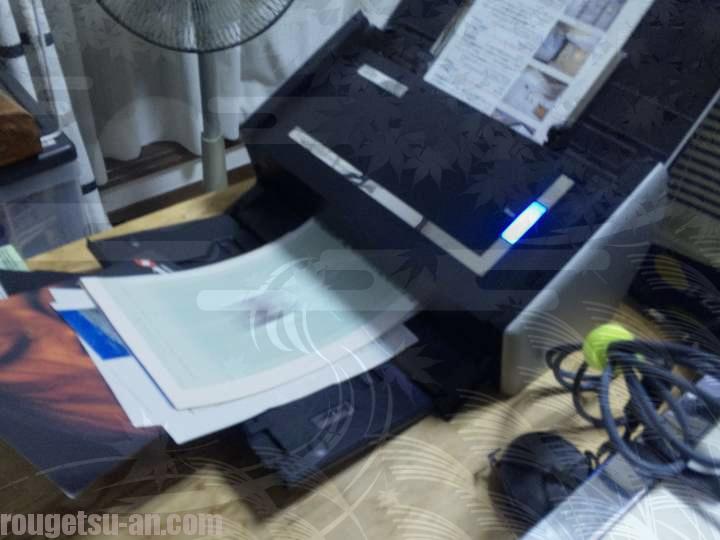




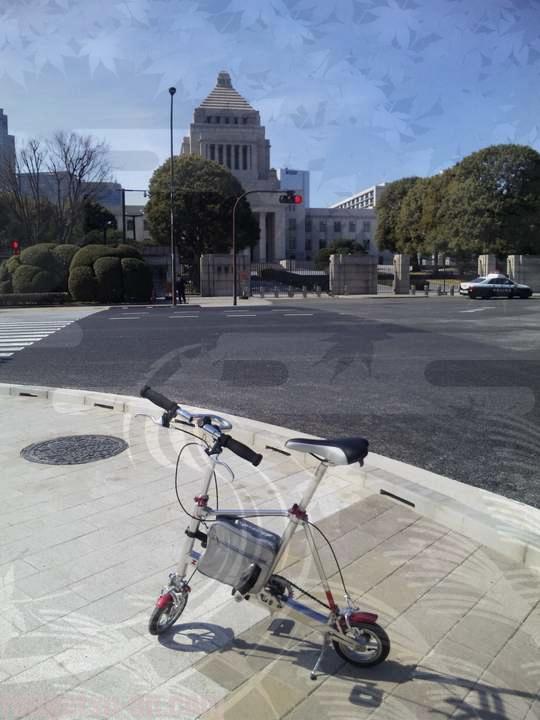
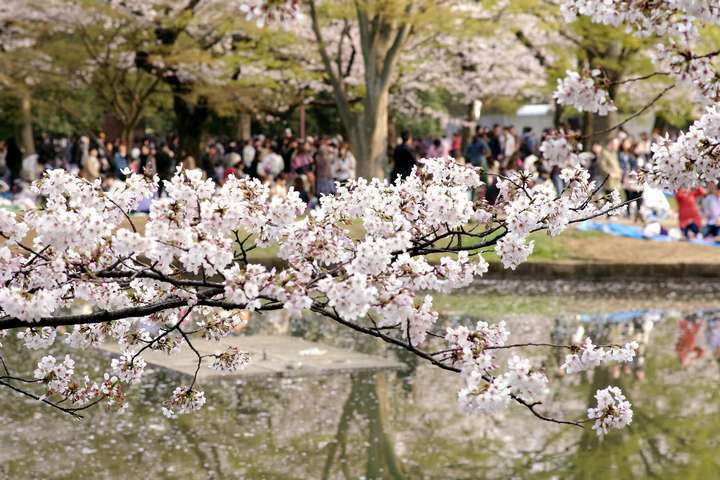
コメント